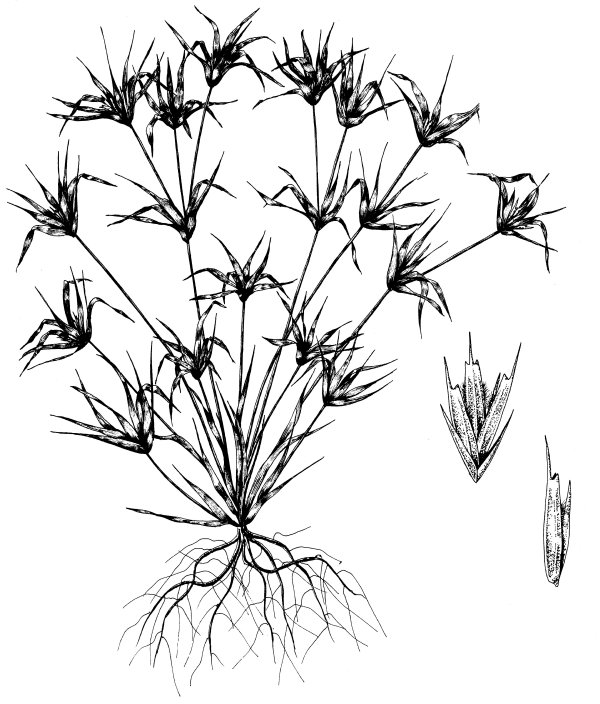
Munroa squarrosa (Nutt.) Torr. Falsebuffalograss Habit: Low spreading, much branched annual, forming mats as much as 50 cm. in diameter. Culms: 10-20 cm. long, the internodes of the prostrate culms scabrous, the fascicles at the nodes consisting of several short leafy branches, with 1 or 2 longer branches with slender internodes, rooting at the nodes. Blades: Short, crowded at the nodes and at the ends of the branches, 1-3 cm. long, 1-3 mm. wide. stiff, spreading, scabrous, pungent. Sheaths: Crowded at the nodes and ends of branches, pilose at the throat, often ciliate on the margins, loose, soon becoming papery, inflated. Ligule: A ring of short hairs about 1 mm. long. Inflorescence: Spikes very short. Spikelets: In pairs or threes, 2-4-flowered, few. almost sessile in the axils of the leaves and almost concealed in the leaf-rosettes, rachilla disarticulating above the glumes and between the florets. Glumes: Of the lower 1 or 2 spikelets equal, 1-nerved, narrow, acute, a little shorter than the lemmas, those of the upper spikelet unequal, the first much shorter or obsolete. Lemmas: 5-7 mm. long. a tuft of hairs on each side near the middle, 3-nerved, those of the lower spikelet coriaceous, acuminate, the points spreading, the midnerve extending into a mucro, those of the upper spikelet membranous. Palea: Hyaline, narrow. 2-nerved, enclosing the grain. Fruit: Grain oval, dorsally compressed. Habitat: Dry plains and hills at medium altitudes; most common in old fields and recently disturbed soil. August-October. Kansas Range: West half and Cherokee county.